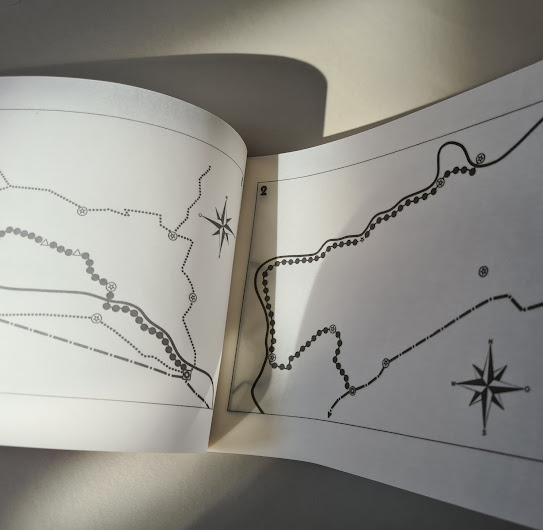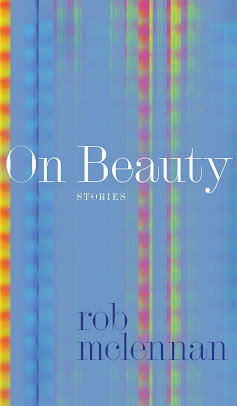1 – When did Timglaset first start? How have your original goals as a publisher shifted since you started, if at all? And what have you learned through the process?
Timglaset started out as a fanzine somewhere around 2011 I guess. I had no real set idea, except that I wanted it to be about the kind of weird art and literature I like. I had been writing about music for many years in fanzines and on blogs and finally got completely fed up with it. Through the zine I started to get in touch with all kinds of amazing people and while working on the early issues my interest in visual poetry exploded. In 2014 I published the first book, an elaborate, partly handmade booklet of Robin Tomens’ collage work and before soon I was a book publisher rather than a zine publisher. One person that has to be mentioned as instrumental in Timglaset’s development into a visual poetry press is Derek Beaulieu. He took an interest very early on and generously provided help and encouragement when I didn’t know what the hell I was doing.
2 – What first brought you to publishing?
I published my first fanzine (about music) when I was in my teens. Where did that urge come from? Well, both my parents were journalists, so that might have had something to do with it. Writing, printing and publishing was almost as natural as breathing and eating.
3 – What do you consider the role and responsibilities, if any, of small publishing?
The role of small press has to be to be daring and at the forefront of the chosen field of publishing. I can’t see the point of a small press which will publish the same things as commercial or academic presses. Personally I have a love of the chapbook, of ideas and concepts, even if they are not fit for a full length book; of the unfinished, of the footnote and the small print. But above all of course a love of that strange hybrid form which is visual poetry.
The question of responsibilities is a really tough one that I struggle with. On the one hand, small press involves lots of unpaid work which means it has to be driven by passion and a love of the work published. I don’t think that small press can be expected to have the same kind of responsibilities regarding representation as commercial presses. On the other hand, if you’re an even slightly political person these issues will be high on your agenda anyway.
4 – What do you see your press doing that no one else is?
It would be presumptuous of me to imagine that Timglaset is in any way unique but one thing is that I have a consciously internationalist focus. I want to publish visual writers from all over the world and am sometimes pained by the fact that I don’t speak any other languages than English well enough to communicate with authors. Also, perhaps too obvious, that I am completely focused on visual writing or other forms of expression which involve both language and a visual perspective. Of course other presses publish visual poetry too, but perhaps not solely.
5 – What do you see as the most effective way to get new books out into the world?
Well, Timglaset would never exist without social media. That’s the short answer. Newsletters are helpful too.
6 – How involved an editor are you? Do you dig deep into line edits, or do you prefer more of a light touch?
Since I only publish visual work my editing will not involve anything deeper than suggestions like: maybe remove that piece or maybe add a couple of pieces. I will rather say no to a manuscript if it has merits but needs a lot of work. I’m very production oriented. If I had the time to publish a book a week I would be happy. I’m often frustrated by how slow it can be sometimes.
7 – How do your titles get distributed? What are your usual print runs?
At least 90% of the books are sold online. I also enjoy book fairs a lot, not least because I get to meet customers and get acquainted with new authors. There are a few - very few - bookshops that regularly stock Timglaset titles. The normal print run is 100 copies. I just keep one for my archive so it usually says 99 in the book.
8 – How many other people are involved with editing or production? Do you work with other editors, and if so, how effective do you find it? What are the benefits, drawbacks?
It’s just me. I would love to have a co-editor but as far as I know there isn’t even anyone else in Malmö, Sweden who has the kind of love for visual poetry that I have.
The TYPEWRITTEN imprint, run jointly by Petra Schulze-Wollgast in Rostock, Germany and myself, is edited and printed by her. I finance it and distribute it. So that’s not really co-editing more like a collaborative agreement.
9– How has being an editor/publisher changed the way you think about your own writing?
I’m not a visual writer myself. As I mentioned, Timglaset started as a fanzine, and my perspective is to a high degree still that of a fan.
10– How do you approach the idea of publishing your own writing? Some, such as Gary Geddes when he still ran Cormorant, refused such, yet various Coach House Press’ editors had titles during their tenures as editors for the press, including Victor Coleman and bpNichol. What do you think of the arguments for or against, or do you see the whole question as irrelevant?
The question is obviously not relevant for Timglaset but if you're the editor and you know you have a great idea for a book, by all means publish it! I don’t think authors should be afraid of self-publishing. There are numerous examples of great authors who self-published.
11– How do you see Timglaset evolving?
This year I have published more full length books than before, for the simple reason that there are some excellent visual poets out there whose work deserves a broader presentation. For the future I hope to publish both full length books, chapbooks and other formats, whatever fits the work best. I try not to make plans far into the future and try to let the work I want to publish guide the publishing process.
12 – What, as a publisher, are you most proud of accomplishing? What do you think people have overlooked about your publications? What is your biggest frustration?
When I started out I knew next to nothing about book design but I think most Timglaset books have turned out rather well, if I may say so myself. I’m not sure if this is something that has been overlooked but I do find design an important factor in publishing. Visual poetry comes in all sizes and shapes and it’s important to me to do the work justice and find a design solution that presents it in the best possible manner.
My biggest frustration is that I have to work for a living too. I wish I had the time, energy and money to do this full time.
13 – Who were your early publishing models when starting out?
To a high degree I was improvising. However, I came in contact with the Canadian chapbook scene early on and was impressed by the variety and quality of the publications. Small press was always more interesting than any major publisher. I should also mention Tom Jenks' zimZalla. Always inventive, always eager to try something which hasn't been tried before. Immediately when I came in contact with zimZalla I knew I wanted Timglaset to have the same openness to different formats and ideas.
14 – How does Timglaset work to engage with your immediate literary community, and community at large? What journals or presses do you see Timglaset in dialogue with? How important do you see those dialogues, those conversations?
The importance of conversations with other presses can’t be overestimated. There’s always a surge of excitement when I receive chapbooks, booklets and collections from Simulacrum Press, Penteract Press, No Press, Puddles of Sky, Viktlösheten, Rebecca Resinski, psw, and many others. I hope to think we inspire each other to be better and to try out new things.
15 – Do you hold regular or occasional readings or launches? How important do you see public readings and other events?
I would love to hold more launches but since most of the authors I publish live far from Malmö it is more often than not impossible. Also good intentions have a habit of falling through. I was supposed to be in Basel, Switzerland at a book fair and launch Hartmut Abendschein’s ‘Asemic Walks’ there but the pandemic got worse again and the flight was cancelled.
16 – How do you utilize the internet, if at all, to further your goals?
The internet is absolutely essential to the relative success of Timglaset. There is almost no interest at all for visual poetry in Sweden but thanks to social media I can reach an international audience. The weird Swedish postage tariffs are also immensely helpful. The cost for sending a book to Canada or Australia is the same as sending it across the bridge to Copenhagen (30 minutes by train or car).
17– Do you take submissions? If so, what aren’t you looking for?
I wish I had time to handle submissions in a professional way but as it is, it takes too much time which I need for all the other work that comes with running a small press.
18– Tell me about three of your most recent titles, and why they’re special.
Language Lines & Poetry is the second book of vispo/asemic by the immensely gifted Dona Mayoora. It takes the constructionist elements of her first Timglaset book, ‘Listening to Red’, one step further, exploring lines, geometrical shapes and structures, using the pen as if El Lissitzky was an asemic writer.
Sacha Archer’s Mother’s Milk is a powerful book of rubber stamped visual poems, full of writhing, slithering shapes, borne out of creative necessity and exhaustion, inky fingers, inky soul.
Asemic Walks: 50 Templates for Pataphysical Inspections by Hartmut Abendschein provides the maps (50 of them) but not the destinations. Printed on translucent paper these maps can be laid on top of any other map, introducing unknown paths and sights in the landscape.







No comments:
Post a Comment